Jeff Chiles
Demonstration of Superconducting Optoelectronic Single-Photon Synapses
Apr 20, 2022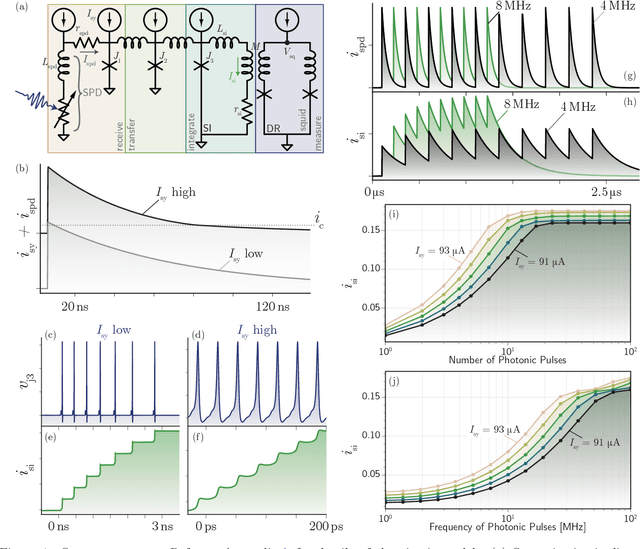
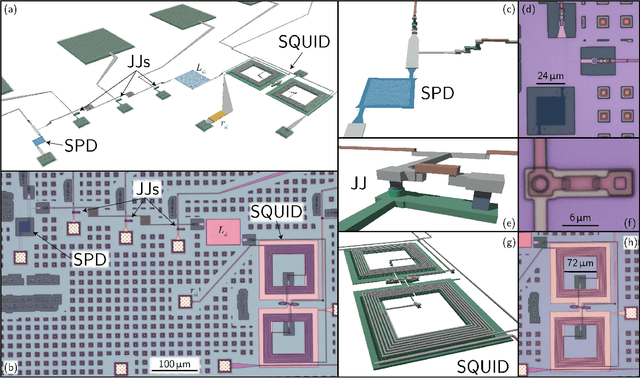
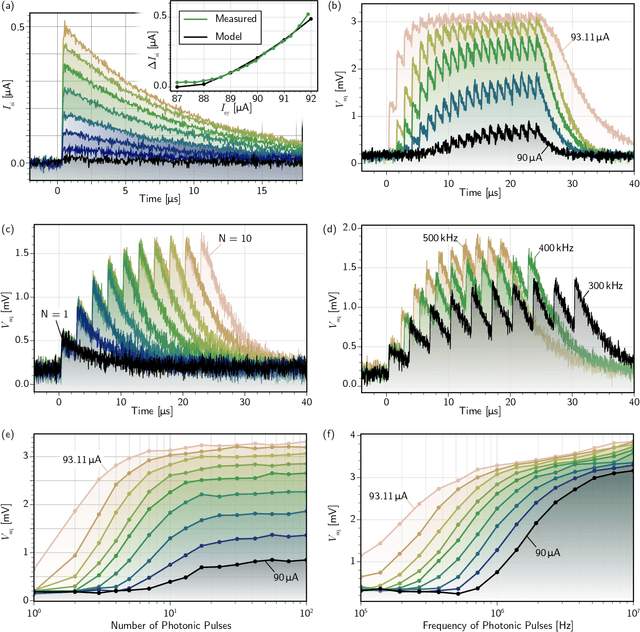
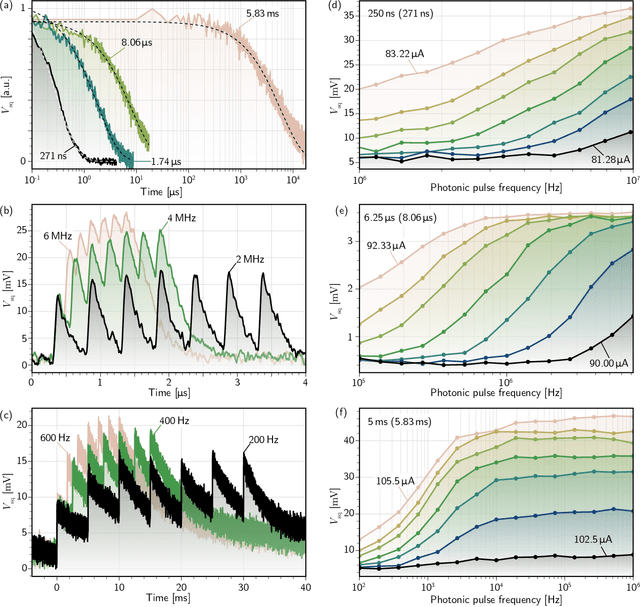
Abstract:Superconducting optoelectronic hardware is being explored as a path towards artificial spiking neural networks with unprecedented scales of complexity and computational ability. Such hardware combines integrated-photonic components for few-photon, light-speed communication with superconducting circuits for fast, energy-efficient computation. Monolithic integration of superconducting and photonic devices is necessary for the scaling of this technology. In the present work, superconducting-nanowire single-photon detectors are monolithically integrated with Josephson junctions for the first time, enabling the realization of superconducting optoelectronic synapses. We present circuits that perform analog weighting and temporal leaky integration of single-photon presynaptic signals. Synaptic weighting is implemented in the electronic domain so that binary, single-photon communication can be maintained. Records of recent synaptic activity are locally stored as current in superconducting loops. Dendritic and neuronal nonlinearities are implemented with a second stage of Josephson circuitry. The hardware presents great design flexibility, with demonstrated synaptic time constants spanning four orders of magnitude (hundreds of nanoseconds to milliseconds). The synapses are responsive to presynaptic spike rates exceeding 10 MHz and consume approximately 33 aJ of dynamic power per synapse event before accounting for cooling. In addition to neuromorphic hardware, these circuits introduce new avenues towards realizing large-scale single-photon-detector arrays for diverse imaging, sensing, and quantum communication applications.
Circuit designs for superconducting optoelectronic loop neurons
Sep 07, 2018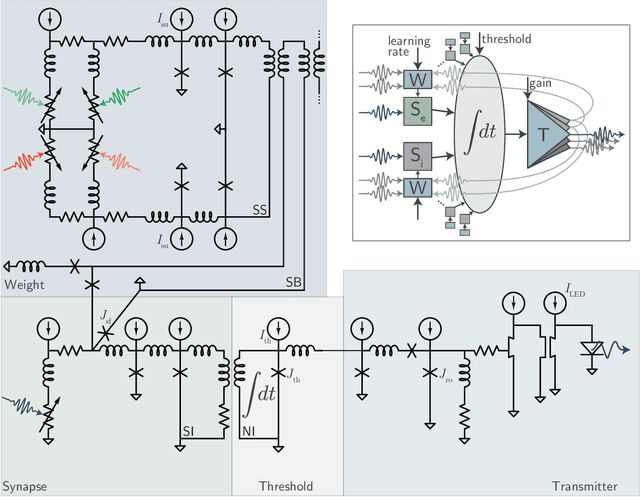
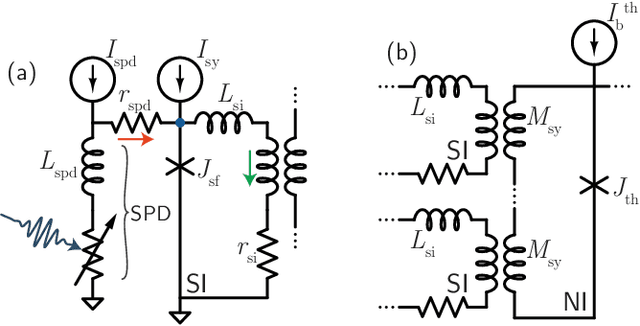
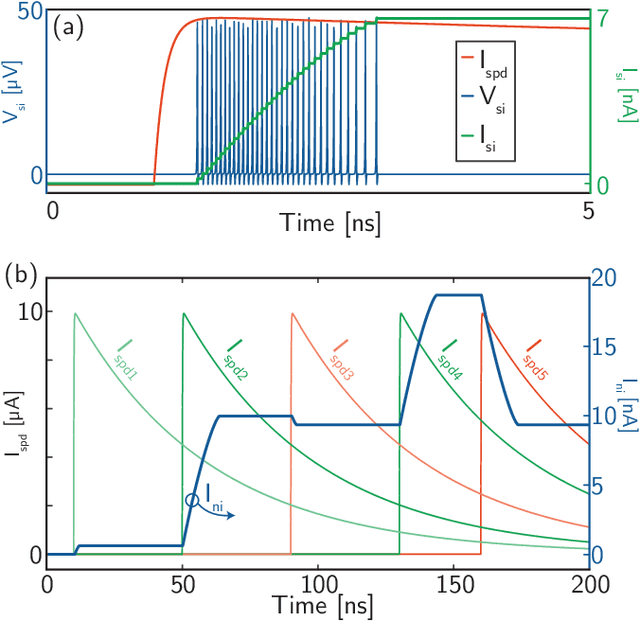
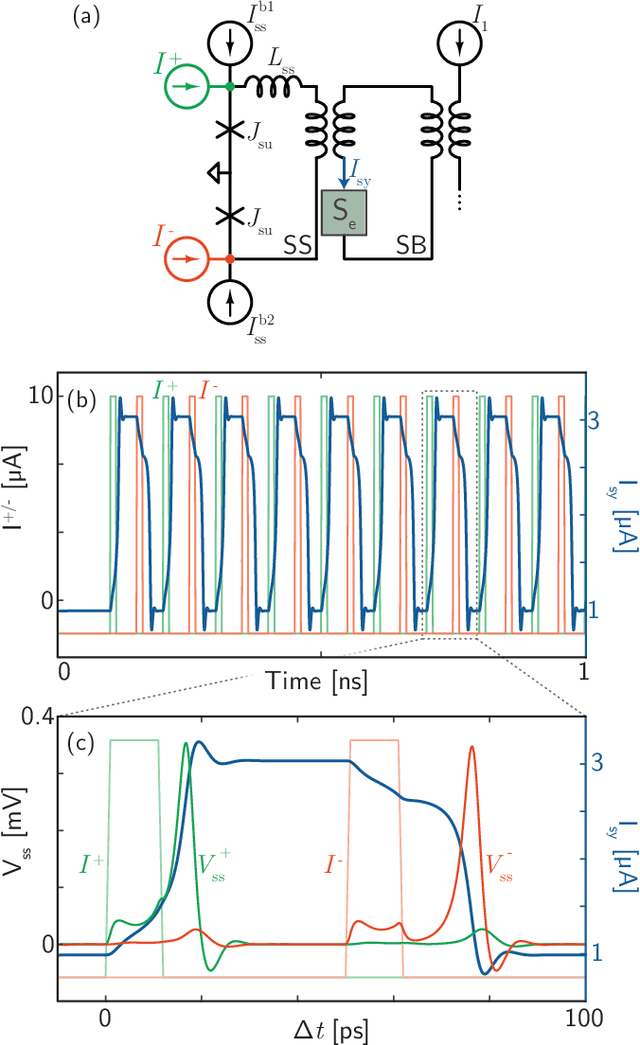
Abstract:Optical communication achieves high fanout and short delay advantageous for information integration in neural systems. Superconducting detectors enable signaling with single photons for maximal energy efficiency. We present designs of superconducting optoelectronic neurons based on superconducting single-photon detectors, Josephson junctions, semiconductor light sources, and multi-planar dielectric waveguides. These circuits achieve complex synaptic and neuronal functions with high energy efficiency, leveraging the strengths of light for communication and superconducting electronics for computation. The neurons send few-photon signals to synaptic connections. These signals communicate neuronal firing events as well as update synaptic weights. Spike-timing-dependent plasticity is implemented with a single photon triggering each step of the process. Microscale light-emitting diodes and waveguide networks enable connectivity from a neuron to thousands of synaptic connections, and the use of light for communication enables synchronization of neurons across an area limited only by the distance light can travel within the period of a network oscillation. Experimentally, each of the requisite circuit elements has been demonstrated, yet a hardware platform combining them all has not been attempted. Compared to digital logic or quantum computing, device tolerances are relaxed. For this neural application, optical sources providing incoherent pulses with 10,000 photons produced with efficiency of 10$^{-3}$ operating at 20\,MHz at 4.2\,K are sufficient to enable a massively scalable neural computing platform with connectivity comparable to the brain and thirty thousand times higher speed.
Superconducting Optoelectronic Neurons I: General Principles
May 24, 2018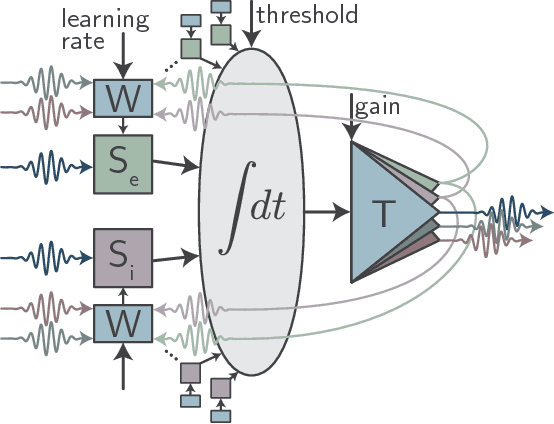
Abstract:The design of neural hardware is informed by the prominence of differentiated processing and information integration in cognitive systems. The central role of communication leads to the principal assumption of the hardware platform: signals between neurons should be optical to enable fanout and communication with minimal delay. The requirement of energy efficiency leads to the utilization of superconducting detectors to receive single-photon signals. We discuss the potential of superconducting optoelectronic hardware to achieve the spatial and temporal information integration advantageous for cognitive processing, and we consider physical scaling limits based on light-speed communication. We introduce the superconducting optoelectronic neurons and networks that are the subject of the subsequent papers in this series.
Superconducting Optoelectronic Neurons V: Networks and Scaling
May 15, 2018



Abstract:Networks of superconducting optoelectronic neurons are investigated for their near-term technological potential and long-term physical limitations. Networks with short average path length, high clustering coefficient, and power-law degree distribution are designed using a growth model that assigns connections between new and existing nodes based on spatial distance as well as degree of existing nodes. The network construction algorithm is scalable to arbitrary levels of network hierarchy and achieves systems with fractal spatial properties and efficient wiring. By modeling the physical size of superconducting optoelectronic neurons, we calculate the area of these networks. A system with 8100 neurons and 330,430 total synapses will fit on a 1\,cm $\times$ 1\,cm die. Systems of millions of neurons with hundreds of millions of synapses will fit on a 300\,mm wafer. For multi-wafer assemblies, communication at light speed enables a neuronal pool the size of a large data center comprising 100 trillion neurons with coherent oscillations at 1\,MHz. Assuming a power law frequency distribution, as is necessary for self-organized criticality, we calculate the power consumption of the networks. We find the use of single photons for communication and superconducting circuits for computation leads to power density low enough to be cooled by liquid $^4$He for networks of any scale.
 Add to Chrome
Add to Chrome Add to Firefox
Add to Firefox Add to Edge
Add to Edge